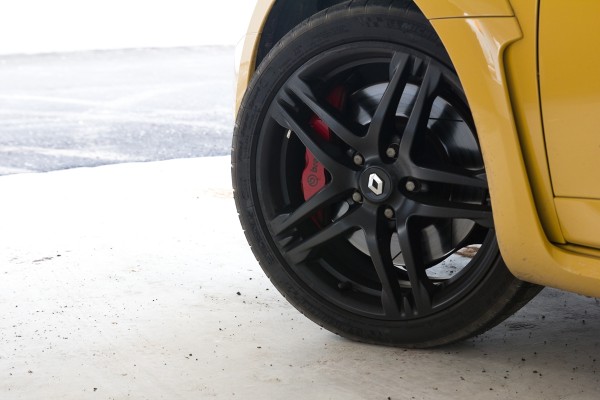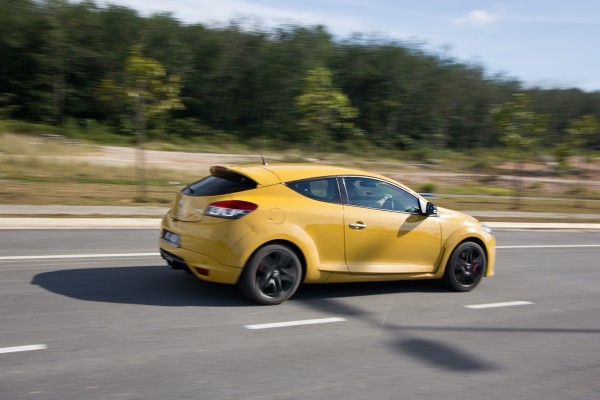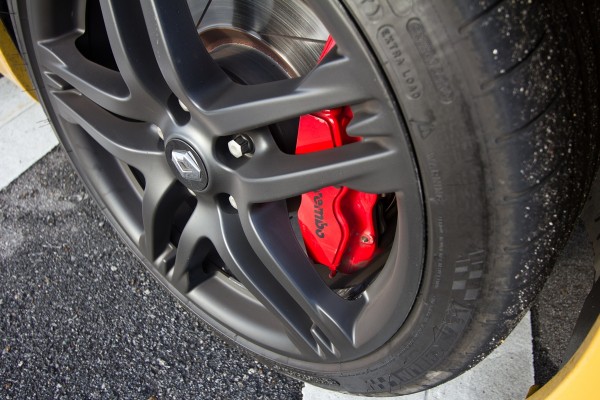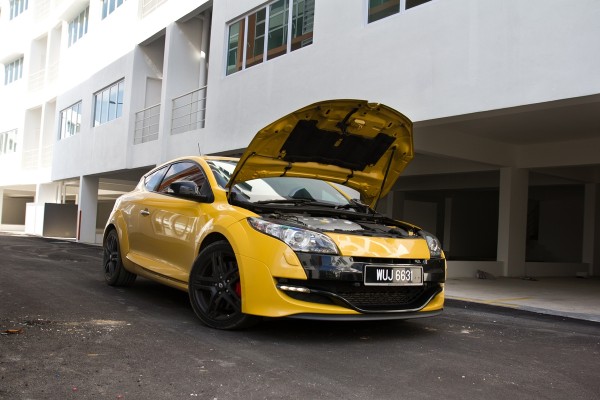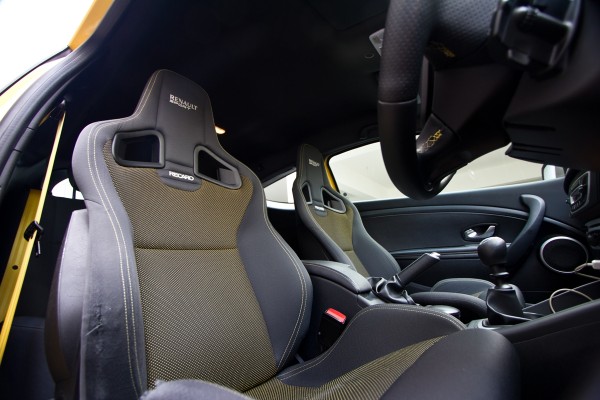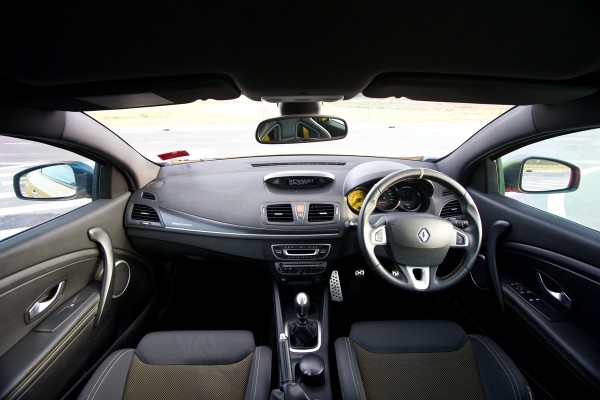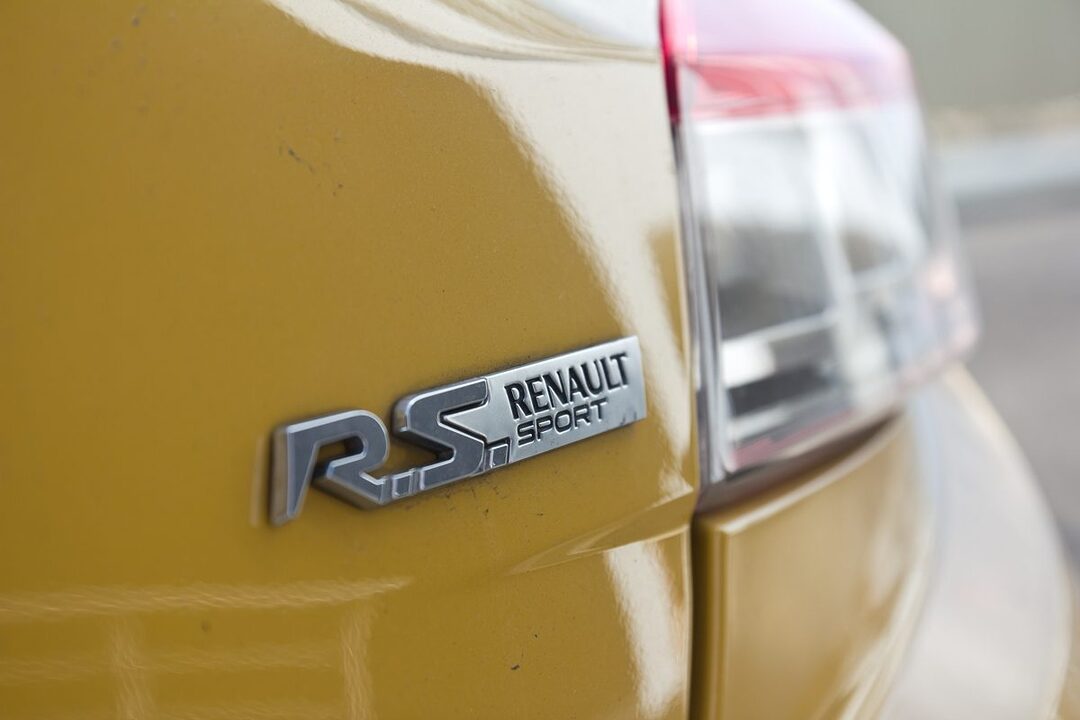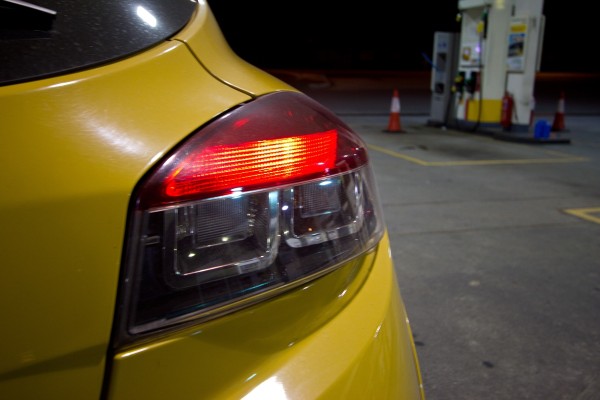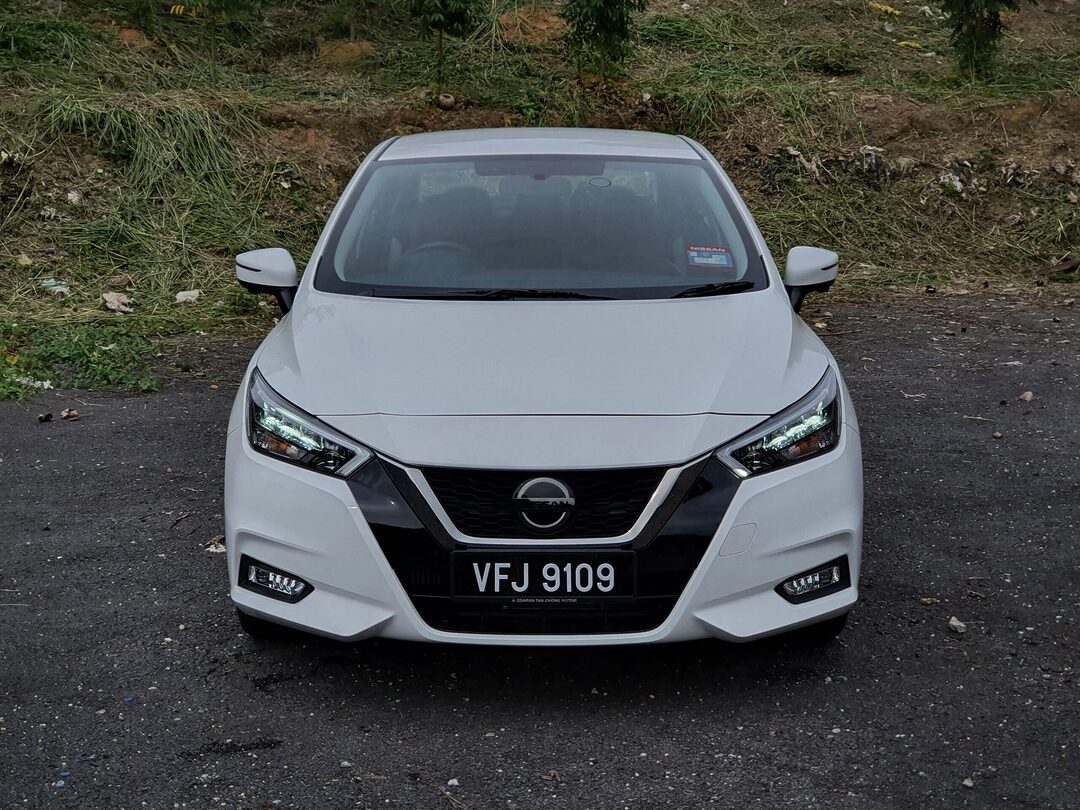Call it tough luck but I’d been waiting for a very long time to get my hands on the RS250, only to get the yellow fellow on the one weekend where the colour yellow was a little taboo. I didn’t let this faze me of course, because believe it or not – I’ve been waiting for damn near two years to drive this hot, hot, hot-hatch. A two year wait is a long time and, despite being a media/test unit abused by many, you could say that this car fared pretty well on both the inside and out.
Let’s move on to the numbers that I’m sure many should already be familiar with. A 2.0L four-pot turbo mill lies under the bonnet, mated to a 6-speed manual tranny capable of producing 250PS and 340Nm, all transferred to the rubbers up front. In Malaysia, the RS250 is priced between the VW Mk6 Golf GTI and 2.0L Scirocco; just going by paper statistics, it is clear that the Renault out-muscles the VWs by a fair bit – more power, more torque, quickest from zerotohundred by a few tenths of a second. I’ve always been a fan of VWs and was keen to find out how the RS250 would compare.
I fired up the engine via start button and listened as it settled to a raspy idle. As I blipped the throttle, it was clear that the engine definitely lacked aural refinement. That slightly gnarly growl from the tuned exhaust, however, was clear indication of the engine’s oomph. The last manual car I drove left me with a twitchy left thigh, so it was a relief to find out that the clutch in the RS250 was much lighter to manage. Gear changes were short and slick, although I admittedly had the occasional snag from second to third (the problem is likely just me).
Throttle response is pretty manic for a four-pot turbo. Drop the clutch and slam the accelerator and you will be thrown deep into the supportive seats. Just going by that sensation coupled with input from my trusty butt-dyno, it seemed silly to question the claimed performance numbers. It was incredible, the RS250 seems to have been gifted with incredible overtaking ability – there is barely any turbo lag, and oodles of mid range grunt. The RS250 runs a little out of breath past 220km/h and while I wasn’t able to hit the claimed 250km/h, it is safe to say I got pretty close.
Which brings me to the handling characteristics of the RS250; anyone who has spent their time reading this article will likely already know that this is more a track-focused road-going car. ‘Cup’ chassis comes as standard and this means stiffer, lower springs, thicker anti-roll bars, specific dampers, wider tyres mechanical LSD on the front wheels, along with aluminum bits to reduce unsprung weight. The result from all this? Awesome handling. Steering is well weighted and super accurate while plenty of feedback is delivered to the palms of your hands, gifting the driver with an extra shot of bravery.
Massive four-pot Brembos on 340mm discs up front help to scrub off big speeds when required. Despite my constant punishing (I attempted a number of 0-100-0 runs), the car showed no signs of fade. In fact, I’d go as far to say that unless you were doing more Sepang runs than shopping runs, you’d be hard pressed to exhaust the limits of the Brembos. Definitely a little overkill for day-to-day driving but hey, no complaints there.
Attack a series of corners and you will be inspired by how composed the RS250 is. The LSD does a fantastic job allowing the driver to power out mid-corner. On more than one occasion, it felt as though the car was cornering on rails with a pre-determined path; that’s just how damn good it was! To put it simply; when you drive a car at its limit, there is a threshold before you start lacking the man-matter between your legs. In the RS250 on our testing grounds, this threshold was pegged around 210km/h. As a general comparison, the previous stick shift I drove on this road was the Nissan 370Z and I only managed 190km/h. I’m not saying that the 370Z is slower because it most certainly isn’t; it is simply the sublime handling in the RS250 that helped to boost my confidence.
Stylistically, it would be difficult to find faults with the RS250. In my opinion, the French never really make any good looking cars, but the Megane is definitely an exception. The car looks like it is ready to race; menacing, low stance, gorgeous 19-inch wheels, flared arches, and all. I find a few cars to have badly designed central mounted exhausts but on the Megane, looks pretty good. If I had a favourite angle, it would have to be the rear three-quarter – from here, you really notice the gorgeous curves on those sexy hips.
The interior of the car however, sports a number of French quirks. The speedometer for example isn’t conventional, moving in odd-numbered increments (10, 30, 50, etc). And, for whatever reason, the whole meter cluster is angled slightly upwards, away from the driver. Most of the buttons are also placed behind the steering wheel making it a lot less intuitive to figure out. Both seats up front need to be adjusted manually and, believe it or not, it took me a whole day to find my perfect driving position. You’ll also need to figure out which footwear to use because I found my shoes occasionally getting stuck in the footwell. For RM230k, I’d also expect a larger screen on the Renault Sport Monitor.
Don’t get me wrong, there are (thankfully) a few saving graces. Yellow accents are splashed across the cabin in a big way – stitching, seatbelts, rev counter, etc and helps to really brighten the interior. Trim and build quality is also pretty good making you aware that this is a more premium car. The Recaro seats up front also provide plenty of support and while most men will love them, women will likely not. Digressing a little, I discovered the best way to climb out from the car was to rest my arse on a particular corner of the seats before hopping out. It would seem as though everyone else settled for that technique because there was an obvious tear in our test car.
At the end of the day, you do get a lot of bang for your ringgit. The Megane looks fantastic plus lots of standard kit that helps to make up for the slightly lacking interior – bi-xenons, four airbags, keyless entry, cruise control, dual climate control, automatic lights/wiper, five-star Euro NCAP rating, etc. It will never be the most practical car, sure – but you can take comfort in knowing that, on the few occasions where you will need to ferry four passengers, or need to fill up the boot (decent at 344 litres), or perhaps find yourself in the situation where mounting a baby-seat is necessary, that the RS250 is perfectly capable. For me, ride was a little harsh especially for a daily driver, but that is strictly a personal preference. If you’re the a frequent visitor of Sepang, keen on experiencing the best handling hot-hatch around (in other words, you’re an enthusiast driver), then look no further than the Megane RS250; this is the car that will do the job (and then some!).
To view/download all the pictures of the Megane RS250 in hi-res, click here.
Renault Megane RS250 Cup
• Zerotohundred: 6.1secs
• Top Speed: 240km/h (tested)
• Engine: 2.0L 4-cylinder turbo
• Power: 250PS / 5,500 rpm
• Torque: 340Nm / 3,000 rpm
• Weight: 1,505kg (kerb weight)
• Fuel Economy: N/A
• Wheels: N/A
• Tyres: 235/40 R18
• Price: RM229,800 (OTR excluding road tax and insurance)




